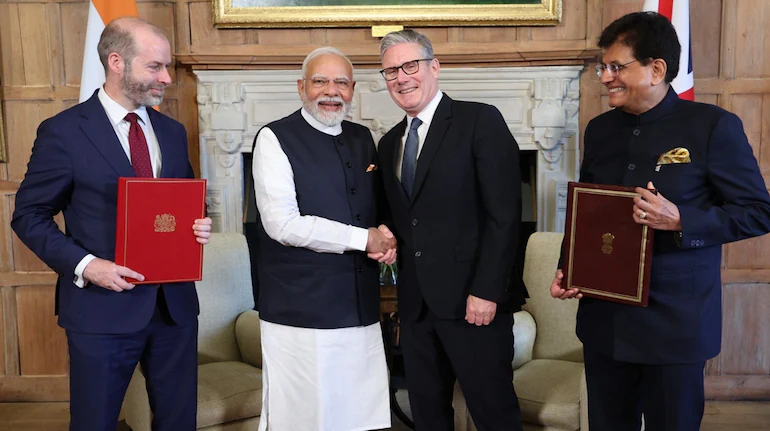Why in the News?
- The failure analysis committee has completed its investigation into the PSLV-C61/EOS-09 mission failure that occurred on May 18, 2025, and the report will soon be submitted to Prime Minister Narendra Modi.
- According to ISRO Chairman V. Narayanan, the issue was a “small” technical problem, but its details will be shared only after the report is submitted.
- The failure marked a rare setback for the Polar Satellite Launch Vehicle (PSLV), considered ISRO’s trusted workhorse.
Key Highlights
- About the PSLV-C61/EOS-09 Mission
- Launched on May 18, 2025, from Satish Dhawan Space Centre, Sriharikota.
- Aim: To place the EOS-09 satellite into a sun-synchronous polar orbit.
- Vehicle: PSLV-C61, one of ISRO’s most reliable rockets.
- What Went Wrong?
- Initial performance: Lift-off and first two stages were successful.
- Third stage malfunction led to failure in achieving the desired orbit.
- Failure Analysis and Investigation
- A failure analysis committee was constituted immediately after the incident.
- The committee has now completed its investigation.
- ISRO Chairman termed the issue as “small,” indicating it may have been minor but mission-critical.
- Significance of PSLV in ISRO’s History
- The PSLV has been operational since 1993 and has had over 50 successful launches.
- Known for placing satellites in LEO, sun-synchronous, and sub-GTO orbits.
- Its failure is rare, and hence this incident draws special attention.
- Next Steps
- The report will soon be submitted to the Prime Minister.
- Details will be made public after official clearance.
- The findings are expected to shape future design and safety protocols.
About PSLVs
- Overview
- The Polar Satellite Launch Vehicle (PSLV) is India’s third-generation and most reliable launch vehicle, developed by ISRO.
- It was the first Indian rocket to use liquid stages and is expendable, meaning each rocket is used only once.
- After its first successful launch in 1994, the PSLV earned a global reputation for cost-effective and precise satellite launches.
- Major achievements include launching:
- Chandrayaan-1 (2008) – India’s first lunar mission.
- Mars Orbiter Mission (2013) – India’s first interplanetary mission.
- Astrosat – India’s first space observatory.
- Launch Capabilities
- PSLV can launch satellites into Low Earth Orbit (LEO), Sun-Synchronous Polar Orbit (SSPO), Sub-Geostationary Transfer Orbit (Sub-GTO), and Geostationary Transfer Orbit (GTO).
- It is used for launching satellites related to: Earth observation, communication, navigation, scientific experiments and space exploration.
- Key Features:
- Type: Expendable, four-stage launch vehicle.
- Payload to Sun Synchronous Polar Orbit: up to 1750 kg
- Payload to sub-GTO: up to 1425 kg
- It has a multi-payload capacity.
- Launch Flexibility: Capable of placing satellites in different orbits in a single mission.
- Four Stages of PSLV:
- First Stage (PS1)
- Solid rocket motor (S139)
- Equipped with 6 strap-on solid boosters
- First Stage (PS1)
- Provides the initial thrust for liftoff
- Second Stage (PS2)
- Liquid-fuel engine (Vikas engine)
- Offers better fuel efficiency and control
- Third Stage (PS3)
- Solid rocket motor
- Powers the rocket after it exits the dense atmosphere
- Fourth Stage (PS4)
- Liquid stage with two engines
- Delivers the payload into the final orbit
- Can be restarted multiple times for precise deployment (e.g., PSLV-C43, PSLV-C58)
- Innovations: PSLV Orbital Experimental Module (POEM)
- POEM uses the spent PS4 stage as a platform for in-orbit scientific experiments.
- It has:
- Solar panels and lithium-ion battery
- Navigation and control systems
- Example: POEM-3 on PSLV-C58 carried experiments after deploying XPoSat.
Types of Orbits
- Types of Orbits Based on Altitude
| Orbit Type | Altitude Range | Key Features | Key Applications & Examples |
| Low Earth Orbit (LEO) | 160 – 1000 km | – Fast orbital period (88–127 mins) – Multiple daily revolutions (up to 16/day) | – Earth observation: RISAT-2B – Communication: OneWeb constellation – ISS orbits here |
| Medium Earth Orbit (MEO) | 2,000 – 35,786 km | – Orbital period: 2–24 hrs – Includes semi-synchronous orbits | – Navigation: GPS, GLONASS, Galileo |
| High Earth Orbit (HEO) | 35,786 km and above | – Orbit matches Earth’s rotation – Stationary over a longitude | – Communications: GSAT series – Weather satellites |
- Types of Orbits Based on Functionality
| Orbit Type | Description | Key Parameters & Examples |
| Geosynchronous Orbit (GEO) | Orbits in sync with Earth’s rotation. Period = 24 hrs | – Altitude: 35,786 km – Appears at fixed longitude – GSAT, INSAT, NavIC (3 satellites) |
| Geostationary Orbit | Special case of GEO – zero inclination and eccentricity | – Appears stationary over a single point – Used for meteorological and communication satellites |
| Polar Orbit | Satellite travels over poles (N–S direction) | – Altitude: 200–1000 km – Inclination ~90° – Applications: Cartosat series (ISRO) |
| Sun-Synchronous Orbit (SSO) | Special polar orbit synchronized with the Sun’s position | – Altitude: 600–800 km – 14 orbits/day – Constant local solar time – Used in SARAL, remote sensing, climate monitoring |
| Semi- Synchronous Orbit | Orbital period of 12 hrs | – Altitude: ~20,200 km – Used in GPS, GLONASS |
| Molniya Orbit | Highly elliptical, high-inclination orbit for high-latitude coverage | – Inclination: 63.4° – Eccentricity: 0.722 – Used by Russian and Sirius communication satellites |
| Transfer Orbits | Intermediate orbits used to reach final orbits | – GTO: For GEO satellites – PTO: For polar satellites – Involves onboard propulsion |
| Halo Orbit (Lagrange Points) | Orbits around Lagrange points (L1–L5), points of gravitational balance | – L1: Aditya-L1 – L2: James Webb Telescope – Stable positions for continuous space observation |
Implications
- Setback to ISRO’s Operational Credibility
- The PSLV’s reliability is a cornerstone of India’s commercial space image.
- Even a single failure can affect international confidence in ISRO’s launch services.
- Impact on Earth Observation Program
- The failure of EOS-09 delays remote sensing and strategic applications, including agriculture, border monitoring, and disaster management.
- Need for Enhanced Stage-Wise Monitoring
- The anomaly occurred in the third stage, which demands better real-time telemetry and redundancy checks in upper stages.
- Pressure on Future Launches
- Upcoming missions, including Gaganyaan and SSLV launches, will be under increased scrutiny.
- Emphasis on error-proofing and simulation testing will grow.
- Policy and Budgetary Implications
- ISRO may seek additional funding for R&D to enhance system resilience.
- Report findings could lead to revised standard operating procedures (SOPs) for future missions.
Challenges and Way Forward
| Challenges | Way Forward |
| Third-stage malfunction caused mission failure | Strengthen design validation and testing of upper-stage propulsion systems |
| Loss of a satellite (EOS-09) and its data potential | Develop rapid replacement strategies and satellite redundancy planning |
| Risk to ISRO’s reputation for reliability | Ensure transparent disclosure and apply corrective actions systematically |
| Pressure on future mission safety | Increase simulation trials and pre-flight fault analysis mechanisms |
| Delay in Earth observation capability | Accelerate deployment of backup Earth observation payloads |
Conclusion
The failure of the PSLV-C61/EOS-09 mission is a rare event in ISRO’s otherwise commendable launch history. While the issue appears to be minor, its impact on mission success was significant. The investigation’s findings will play a critical role in reinforcing ISRO’s technical robustness, restoring global confidence, and shaping the roadmap for future space missions, particularly in an era where India is striving for leadership in commercial and strategic space.
| Ensure IAS Mains Question Q. The PSLV is considered the workhorse of ISRO’s space missions. In light of the recent failure of the PSLV-C61 mission, examine the challenges faced in space launch vehicle development and the importance of failure analysis in enhancing mission reliability. (250 words) |
| Ensure IAS Prelims Question Q. With reference to the Polar Satellite Launch Vehicle (PSLV), consider the following statements: PSLV is a four-stage launch vehicle that uses both solid and liquid fuels. It is capable of launching satellites into Geostationary Orbit directly. PSLV has been used to launch both Chandrayaan-1 and Mars Orbiter Mission. Which of the statements given above are correct? a) 1 and 2 only b) 1 and 3 only c) 2 and 3 only d) 1, 2 and 3 Answer: b) 1 and 3 only Explanation: Statement 1 is correct: PSLV has four stages, alternating between solid and liquid fuels, which allows it to optimize thrust and fuel efficiency. Statement 2 is incorrect: PSLV cannot directly launch satellites into Geostationary Orbit (GEO). It can place satellites into Low Earth Orbit (LEO), Sun-Synchronous Orbit (SSO), and Geosynchronous Transfer Orbit (GTO), but not directly into GEO. Statement 3 is correct: PSLV was used for major missions like Chandrayaan-1 (2008) and Mars Orbiter Mission (Mangalyaan, 2013). |





